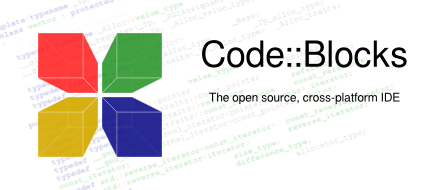

- #CODE BLOCKS DEBUGGER NOT WORKING HOW TO#
- #CODE BLOCKS DEBUGGER NOT WORKING INSTALL#
- #CODE BLOCKS DEBUGGER NOT WORKING DRIVER#
Remove unsupported set/show gpu_busy_check command. Performance improvements for applications using CUDA Lazy Loading.Īdd support for ELF cubins with a large number of sections (more than 32767).Īdd break_on_launch support for CUDA Graphs.
#CODE BLOCKS DEBUGGER NOT WORKING DRIVER#
See the CUDA Driver API manual for more information. Host shadow breakpoints are now handled correctly with CUDA Lazy Loading enabled.įix name mangling issue when debugging LLVM generated cubins.ĬUDA Cluster coordinates are now displayed correctly.įix issue with attaching to an application using CUDA Lazy Loading when debugging remotely with cuda-gdbserver.ġ2.1 Release CUDA Driver API added for controlling core dump behaviorĬTK 12.1 and the r530 driver adds new APIs that allow developers to enable/configure core dump settings programmatically inside their application instead of using environment variables.

#CODE BLOCKS DEBUGGER NOT WORKING HOW TO#
See Confidential Computing Deployment Guide for more details on how to enable the mode.įix “?” appearing in backtrace in OptiX applications. Release Notes Įnable printing of extended error messages when a CUDA Debugger API error is encountered.Įnable support for debugging with Confidential Compute mode with devtools mode. It is assumed that the user already knows the basic GDB commands used to debug host applications. Some walk-through examples are also provided.
#CODE BLOCKS DEBUGGER NOT WORKING INSTALL#
The rest of the document will describe how to install and use CUDA-GDB to debug CUDA kernels and how to use the new CUDA commands that have been added to GDB. This document is the main documentation for CUDA-GDB and is organized more as a user manual than a reference manual. Fortran debugging support is limited to 64-bit Linux operating system.ĬUDA-GDB allows the user to set breakpoints, to single-step CUDA applications, and also to inspect and modify the memory and variables of any given thread running on the hardware.ĬUDA-GDB supports debugging all CUDA applications, whether they use the CUDA driver API, the CUDA runtime API, or both.ĬUDA-GDB supports debugging kernels that have been compiled for specific CUDA architectures, such as sm_75 or sm_80, but also supports debugging kernels compiled at runtime, referred to as just-in-time compilation, or JIT compilation for short. The existing GDB debugging features are inherently present for debugging the host code, and additional features have been provided to support debugging CUDA device code.ĬUDA-GDB supports debugging C/C++ and Fortran CUDA applications.

Just as programming in CUDA C is an extension to C programming, debugging with CUDA-GDB is a natural extension to debugging with GDB. Supported Features ĬUDA-GDB is designed to present the user with a seamless debugging environment that allows simultaneous debugging of both GPU and CPU code within the same application. This enables developers to debug applications without the potential variations introduced by simulation and emulation environments. The tool provides developers with a mechanism for debugging CUDA applications running on actual hardware. CUDA-GDB is an extension to GDB, the GNU Project debugger. What is CUDA-GDB? ĬUDA-GDB is the NVIDIA tool for debugging CUDA applications running on Linux and QNX. This document introduces CUDA-GDB, the NVIDIA ® CUDA ® debugger for Linux and QNX targets. The user manual for CUDA-GDB, the NVIDIA tool for debugging CUDA applications on Linux and QNX systems.


 0 kommentar(er)
0 kommentar(er)
